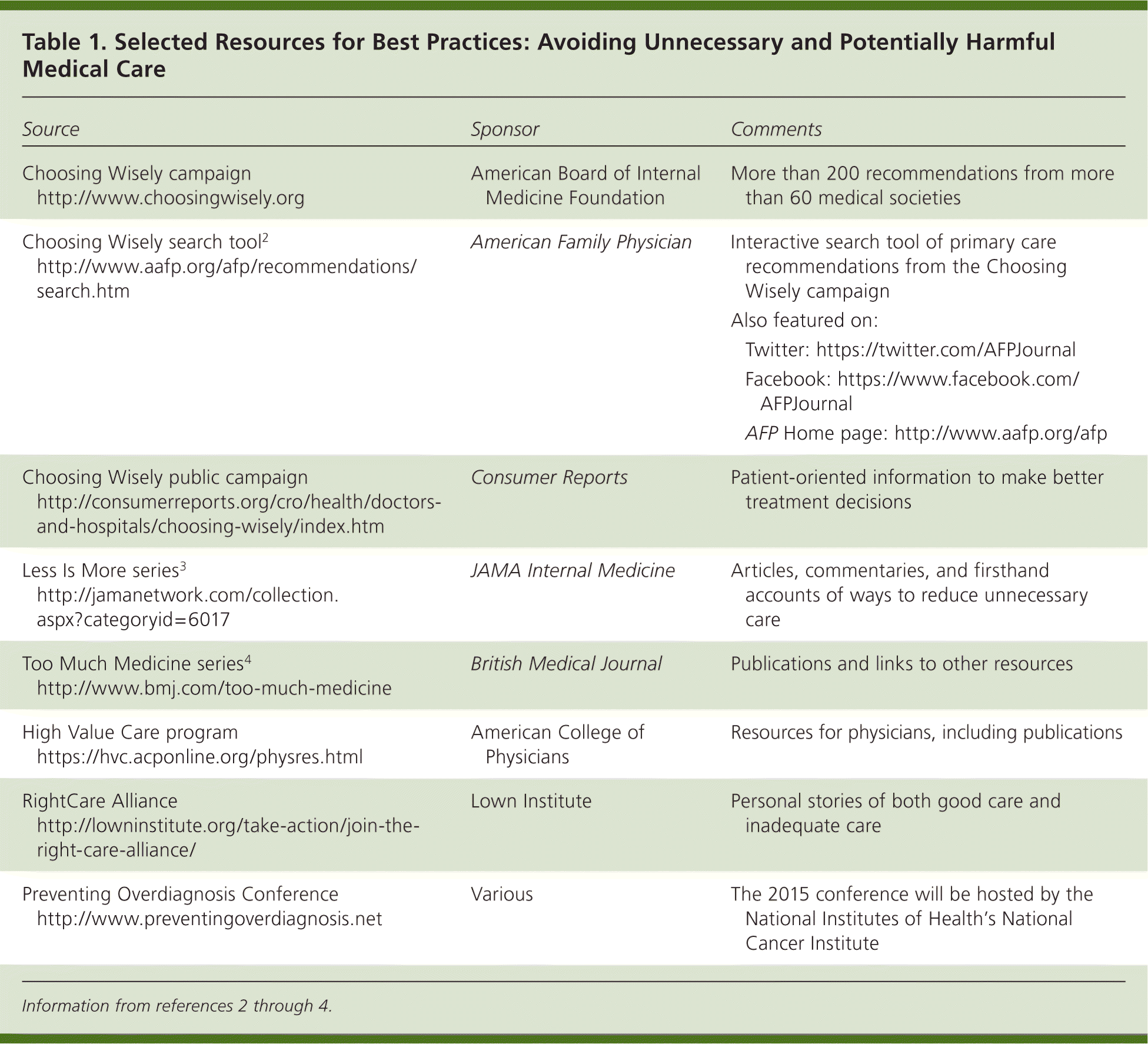
Am Fam Physician. 2015;91(1):18-20
Related editorials: Improving Quality by Doing Less: Overscreening; Improving Quality by Doing Less: Overdiagnosis; and Improving Quality by Doing Less: Overtreatment
Author disclosure: No relevant financial affiliations.
In a widely publicized 1999 report, the Institute of Medicine estimated that as many as 98,000 Americans die each year from preventable medical errors, and that is just those occurring in hospitals.1 That would make this unreported phenomenon the sixth leading cause of death in the United States, ahead of Alzheimer disease and diabetes mellitus. In response to this and similar concerns, there has been an unprecedented international effort to combat the problems of medical errors and overtreatment, with multiple like-minded strategies in place (Table 1).2–4
Of course, practicing good medicine and avoiding unnecessary harm have always been principles of medical practice. But, along with the evidence-based medicine movement and the application of best evidence to inform collaborative treatment decisions, there is a new emphasis on reducing practices that are likely to have limited benefit and potential harm. As an indication of this, a recent PubMed search showed that there were 261 articles with the word “overtreatment” in the title; the first was from 1929, but there were only 20 or so articles until the 1970s, with 168 (64%) of them being from 2000 onward. Similarly, there were 395 articles with the word “overdiagnosis” in the title; the first one was from 1973, with 327 (83%) of them being from 2000 onward. And the word “overscreening” appeared in only five citations, the earliest was from 2010. Clearly, medical overuse is a topic of growing clinical importance.5

| Source | Sponsor | Comments | ||
|---|---|---|---|---|
| Choosing Wisely campaign http://www.choosingwisely.org | American Board of Internal Medicine Foundation |
| ||
| Choosing Wisely search tool2 https://www.aafp.org/afp/recommendations/search.htm | American Family Physician |
| ||
| Choosing Wisely public campaign http://consumerreports.org/cro/health/doctors-and-hospitals/choosing-wisely/index.htm | Consumer Reports |
| ||
| Less Is More series3 http://jamanetwork.com/collection.aspx?categoryid=6017 | JAMA Internal Medicine |
| ||
| Too Much Medicine series4 http://www.bmj.com/too-much-medicine | British Medical Journal |
| ||
| High Value Care program https://hvc.acponline.org/physres.html | American College of Physicians |
| ||
| RightCare Alliance http://lowninstitute.org/take-action/join-the-right-care-alliance/ | Lown Institute |
| ||
| Preventing Overdiagnosis Conference http://www.preventingoverdiagnosis.net | Various |
| ||
American Family Physician is committed to being part of this movement to practice sound medicine, improve patient safety, and reduce harm. Our series of editorials on overscreening, overdiagnosis, and over-treatment, co-authored by AFP Deputy Editor Dr. Mark Ebell, outlines the challenges of too much medicine and provides practical guidance on reducing unnecessary medical practices.6–8 We encourage you to explore our Choosing Wisely search tool (https://www.aafp.org/afp/recommendations/search.htm), and welcome your suggestions for ways to help family physicians continue to provide the best care for their patients.
editor's note: Dr. Siwek is editor of AFP.
